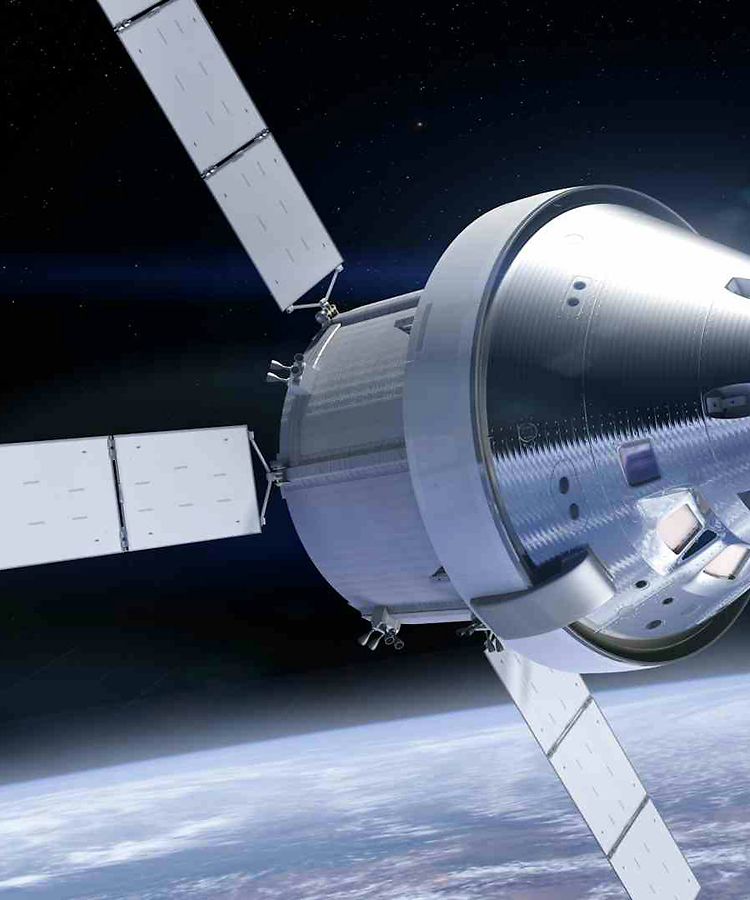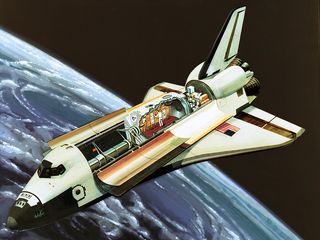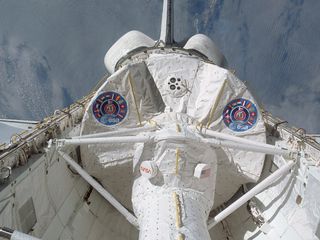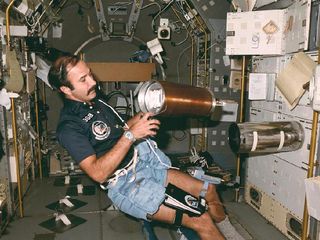To the moon and beyond
One day, the Orion European Service Module built by Airbus will take humans to the Moon and beyond. It continues a legacy of pioneering technology that includes the ATV cargo transporters and the Spacelab and Columbus research modules.
European space science blasts off
In July 1973, while many people were talking about the new James Bond film Live and Let Die and the death of charismatic martial arts exponent Bruce Lee, Europe was looking to the sky. That month, during the second European Space Conference in Brussels, European ministers approved the Spacelab programme: a module for scientific missions to be mounted aboard the new US Space Shuttle.
The Spacelab platform was to be built by an industrial consortium headed by MBB-Erno, one of the predecessor firms of today’s Airbus. During that same meeting, the ministers also approved the founding of the European Space Agency (ESA).
This paved the way for the inception of Europe’s manned spaceflight programme, which ESA and Airbus worked on hand in hand from the very beginning.
Only a decade later, Spacelab, Europe’s first space laboratory, was placed in orbit on 28 November 1983. This was to be the first of 22 Spacelab missions involving cutting-edge scientific experiments in fields such as new materials, processing of pharmaceutical products and astronomical observation.

The beginning of a great friendship
“Looking beyond that launch, let us endeavour to continue to work together in the same spirit of cooperation and mutual support that brought us together today.” These words, by NASA administrator James M. Beggs at the welcoming ceremony in the United States following Spacelab’s arrival from Europe in 1982, later proved to be prophetic.
Although Spacelab was retired in 1998, it was used as the blueprint for Columbus, the laboratory built by Airbus Defence and Space which is now the centrepiece of Europe’s contribution to the International Space Station (ISS).
"Let us endeavour to continue to work together in the same spirit of cooperation and mutual support that brought us together today"James M. Beggs, NASA administrator, 1982
A house for cutting-edge research
“Columbus is the first permanent European research facility in space,” explains electrical engineer Helmut Luttmann, Airbus Defence and Space’s head of ISS operation and exploitation.
Described by NASA as “a house for cutting-edge research”, since Columbus was docked to the station in 2008 it has been used to perform hundreds of experiments. These include ESA’s recent MARES tests to research the effects of weightlessness on the muscles of the human body.
Luttmann recalls major challenges his team has had to overcome, such as the time they changed the space station’s position in 2012 to record a complete rotation of the sun with the SOLAR instruments. It was the first time the ISS had been repositioned to perform a scientific experiment.

Sophisticated space freighter
Another memorable moment for Luttmann was the 2014 mission by ESA astronaut Alexander Gerst, which required them to develop a facility to measure magnetic fields in only one year as part of the MAGVECTOR experiment.
“We took up the challenge, although normally it would have needed four years or more. Nonetheless, we did it and it worked right from the outset.”
Luttmann says the five Automated Transfer Vehicles (ATVs) used to ferry more than 31.5 tonnes of supplies to the ISS up until 2015 was also a major success for Airbus Defence and Space.
"With the ATVs, we became a full partner with NASA on major space programmes... The ATVs demonstrated our ability to dock automatically with the ISS, which is vital technology for future space exploration projects. We achieved this in Europe, without major support from NASA or Russia.” Helmut Luttmann, Airbus Defence and Space Head of ISS operation and exploitation
Humans in deep space
“Spacelab, Columbus and the ATVs have given us the capability to develop a highly reliable, top-quality system that will be crucial to the success of NASA’s exploration missions: the European Service Module of the Orion Multi-Purpose Crew Vehicle,” explains Luttmann.
The Orion capsule’s European Service Module is the first system-critical element to be entrusted by NASA to an international partner
NASA’s Orion capsule is designed to take humans to the Moon and beyond, with the ultimate aim of reaching an asteroid in lunar orbit around 2025 and Mars in the 2030s. Airbus is the prime contractor for the European Service Module (ESM). Located below the crew module, it will supply power, propulsion, thermal control, water and air for future manned deep-space missions.

Beyond the shoulder of Orion
The ESM is cylindrical in shape and about four metres in diameter and height. It is characterised by its four-wing solar array (19 metres across when unfurled) typical of the ATVs. The solar panels work on long-duration missions, meaning there is no need to worry about refilling fuel cell systems while travelling through space.
The ESM’s 8.6 tonnes of propellant will power one main engine and 32 smaller thrusters used to perform orbiting manoeuvres and altitude control. Once again, ESA will rely on the experience gained with the ATVs, which successfully used their thrusters to allow the ISS to dodge space debris
"The requirements for a mission to the Moon are completely different than for travel to the ISS in low Earth orbit. So, we have to change the design of the ATV by integrating, for example, one large main engine providing enough power to go to the Moon and back. For the time being, we will use refurbished engines from the shuttle programme." Oliver Juckenhöfel, Airbus Defence an Space Head of orbit services and exploration
In 2018, the Orion capsule will perform an unmanned mission known as Exploration Mission-1, with the aim of travelling 64,000 kilometres beyond the Moon to demonstrate the spacecraft’s performance.
The first manned mission, Exploration Mission-2, is expected to launch four astronauts inside Orion in 2021 at the earliest.
“When that time comes, it will represent the culmination of the joint efforts heralded by NASA administrator James M. Beggs four decades earlier.
Manuel Ansede
Europe takes off for space
Just as in 1973 with the historic approval of the Spacelab programme, the ESA Ministerial Council met in December 2016 to lay out the future of space for Europe. Based on the vision of a ‘United Space in Europe’, the Ministers committed to invest a total of €10.3 billion in space activities across 2017 and 2018.
This support will focus on numerous areas, including a second European Service Module for the Orion programme, as well as developing a habitat that could be launched with Orion to provide a larger living and working space in lunar orbit.
Manuel Ansede



